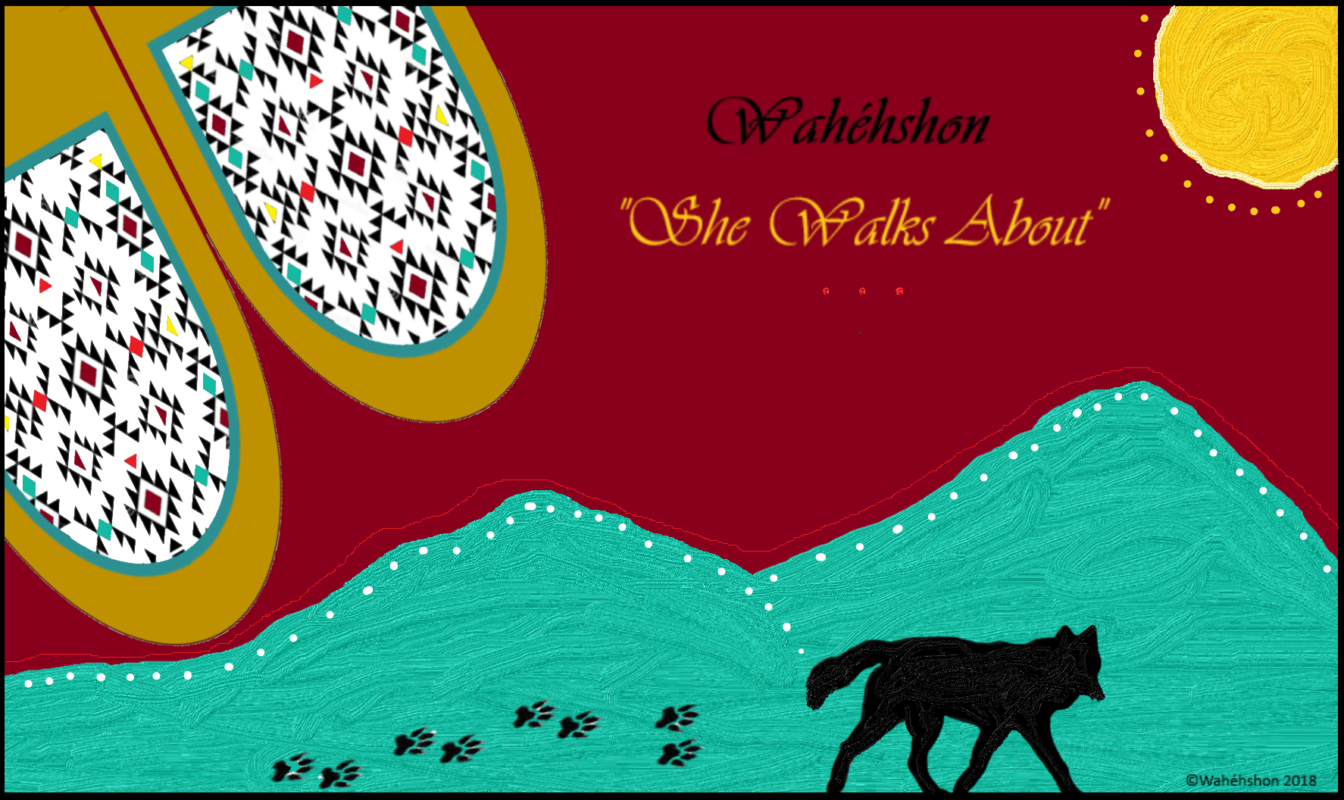On April 26, 2018, our team based at the Kahnawà:ke Education Center working under the project title, Skátne Enionkwaió’ten “We will all work together” launched a five-year strategic plan for language revitalization in Kahnawà:ke. I have worked on this project since October 2017.
When Kahtehrón:ni Iris Stacey (the project leader) first contacted me about the project over a year ago, I was reluctant to take on work while studying full-time. The more she told me about the project, the more I understood how important this work is to keeping our language alive. In fact, she brought it up to me on three separate occasions and the third time, I visited her office to discuss the project and the role of the part-time Language Plan Coordinator in greater detail. I am so thankful that she kept me in mind and gave me this wonderful opportunity!
Our team hosted two language planning sessions in Kahnawà:ke: Thursday November 23, 2017 and Thursday January 18, 2018. I developed the planning documents, the agenda, and the topics based on the discussion and approval of our steering committee members. As is the case in many collaborative community projects, the timeline that was set in the project/grant work-plan was a gross underestimation. In response, I allotted additional time to groups to continue working on their planning documents for weeks after the planning sessions had concluded. This did mean I had to follow up and prompt the groups to submit their draft plans.
My job is essentially a project coordinator position. This means that while I have support and guidance from a team (such as the Project Leader, my co-workers, the steering committee, and volunteers), I do most of the organizing and writing work on my own. I don’t mind this part of it, I am self-motivated and organized. I did put a lot of pressure on myself though, mostly due to what I imagined were the expectations of Kahnawa’kehró:non. There were many ways that the language plan could have been written and presented to the community. Kahtehrón:ni and I also had many discussions about how to present the plan, what was important to include in our 40 page (maximum) document, and how to ensure it was accessible to community. The push to meet deadlines mixed with anticipation for completion cost me many nights of sleep. But it was all worth it!!
I asked Kahtehrón:ni to write the preamble, history, and speakers bios. She has had many years of experience working in language revitalization and this initiative was a dream of hers. Of course, she did a beautiful job with the introductory section of the plan and set the tone for it. I wrote the other pages and did the layout in the first draft. Really, this was more like assembling thoughts, words, and ideas of the community members that attended and provided feedback. I did my best to capture the essence of what each language program, school, or organization was about. Throughout the process, every group had input on their page down to the photos they supplied and the wording of their page.
The translation and graphic design were more time-consuming than we imagined. I brought Kaia’titáhkhe sections of my draft (in English) and she would hand-write the translations. I would then take them to Akwiratékha to type and edit. When I received the typed pages, I inserted the content into my draft so that the layout matched the English version. Otherwise, it would be too difficult for our graphic artist Cheryl to insert the translated text into the Kanien’kéha document. We had to go through this process under intense pressure to meet the print deadline for the launch celebration. As we approached the deadline, our entire team working on the language plan (Kaia’titáhkhe, Akwiratékha, Cheryl and I) worked all-hours to submit the final versions on time. We knew that there would be things missed in the editing but it was more important to launch the plan at the end of April during cultural awareness month.
The result of this project is a beautiful 80 page bilingual language plan that we are all very proud of! I am the only person that read every document, comment, and suggestion collected throughout this process. It is impossible to capture it all in writing but I proposed building a website to share more of the content with the community (I should not be the only one to read those words!). At our launch celebration, we also announced our new website. I will continue to manage the Facebook page and the website on a volunteer basis to provide updates and events that come out of Skátne Enionkwaió’ten.
There are many people to thank who supported me and shared their knowledge with me over the past eight months. I will come back to that as I near the end of my position. I am incredibly humbled by the strength and determination of our people. I am thankful for the teachers and speakers that worked their entire lives to get us to this point. Without you all, we wouldn’t even have a chance and now we have a plan!! Kwanorónhkhwa.
~Wahéhshon


